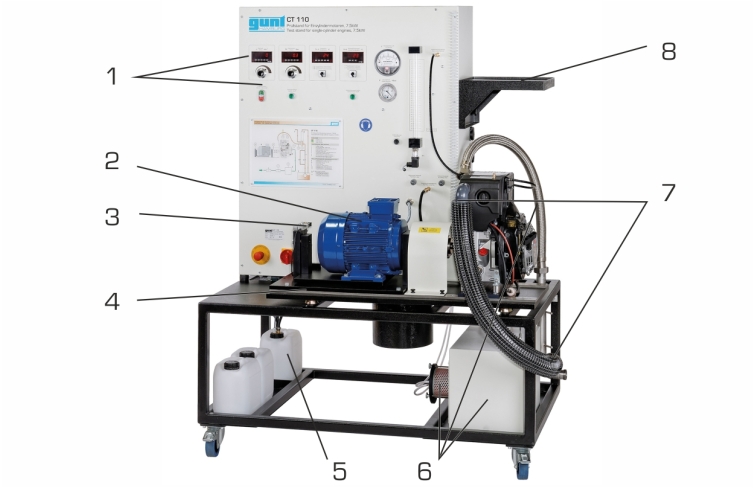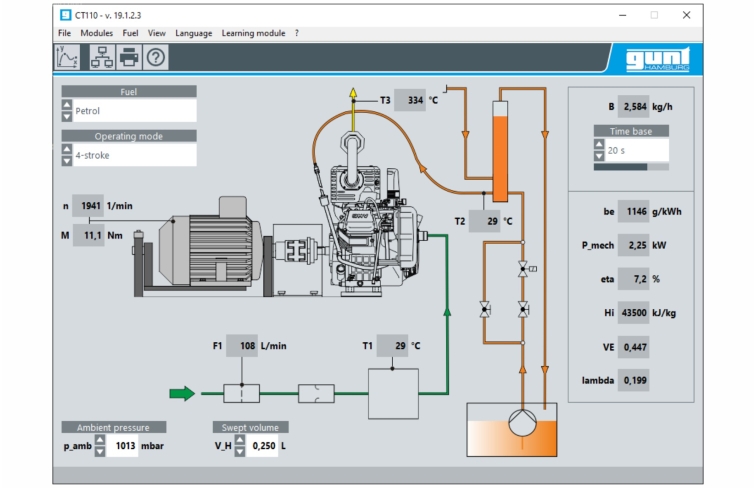This test stand measures the power output of internal combustion engines delivering up to 7,5kW. The complete test stand consists of two main elements: The CT 110 as the control and load unit and a choice of engine: four-stroke petrol engine (CT 100.20), two-stroke petrol engine (CT 100.21) and two four-stroke diesel engines (CT 100.22, air-cooled with direct injection; CT 100.23, water-cooled with indirect injection).
The main function of the CT 110 is to provide the required braking power. The brake unit is an air-cooled asynchronous motor with an energy recovery unit. The torque and speed are generated by way of a frequency converter. The energy recovery of the braking energy into the system provides for highly energy-efficient operation of the test stand. The torque is measured by means of a suspended brake unit and force sensor.
The engine is mounted on a vibration-insulated base plate and connected to the asynchronous motor. The mass of the base plate in conjunction with the soft bearing support ensures that the test stand runs very smoothly.
The asynchronous motor is initially used to start the engine. As soon as the engine is running, the asynchronous motor and energy recovery unit act as a brake unit for applying a load to the engine. The braking power is fed back into the electrical system. In passive mode of the engine the asynchronous motor is also used to determine the frictional power of the engine.
The lower section of the mobile frame contains fuel tanks and a stabilisation tank for the intake air.
The air consumption is measured by way of a measuring nozzle. The fuel consumption is measured by way of the level in a vertical pipe.
The switch cabinet contains digital displays for the speed, torque and temperatures. Pressure gauges indicate negative intake pressure and air consumption. The measured values are transmitted directly to a PC via USB. The data acquisition software is included.




























